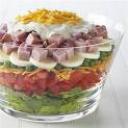BIOGRAPHIES
ALESSANDRO VOLTA
Alessandro Volta was born in Italy, in 1745, in Como, Lombardy Italy and went to school there. Then, in 1745, he became a professor of Physics at the Royal School in Como and made some various inventions. Later, in 1779, he became a professor of Physics at the University of Pavia. After that, in 1780, he developed the voltaic, a forerunner of the electric battery. Next, in 1794, he was married to Teresa Peregrini, and had three sons. After that, in 1810, Napoleon made him a Count to honour him. In 1827, he died and, in 1881, an electrical unit, the volt, took his name.
IGOR SIKORSKY
Later, from 1925 to 1940, he created a series of increasingly successful aircraft, including the first helicopter. Finally, he died in the USA in 1972.
SCYLLA AND CHARYBDIS
They were two sea monsters who lived in opposite caves in Gibraltar straits or Sicily straits. Scylla was a monster with six heads who ate big fish, but also humans who were passing with their ships near her cave. In that way, she managed to eat the partners of Odysseas. Charybdis looked like a mermaid, that is to say from the middle of her body and up she was a woman and from the middle and down she was a fish. She lived in the opposite cave of Scylla’s cave and she swallowed the water of the sea with everything that was into it.











